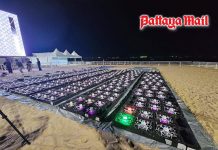
I remember meeting an acquaintance for dinner some time ago. She was from Australia and when I reached for the wine menu, she drawled in a kind of world-weary tone, “Anything but Chardonnay.” Such people are sometimes known as “ABC-types” for obvious reasons. Unfortunately, the remark reveals ignorance rather than personal preference. In the Burgundy region of Eastern France, Chardonnay is made into some of the finest white wines you are likely to encounter, if you can afford them. The grape is also the soul of the superb bone-dry wines of Chablis. This is why you’d never hear French people coming out with such a fatuous remark.
You might wonder how this curious ABC attitude emerged. Well, my feeling is that Chardonnay simply became a victim of its own popularity. For one thing, Chardonnay is relatively easy to grow. It’s not too fussy either and can thrive in both cool and warm climates. This is one of the reasons is has become so popular with wine makers all over the world. Some of the finest Chardonnays also hail from the New World. You might recall the historic occasion in 1976 when a Californian Chateau Montelena Chardonnay took top honors at the famous Judgment of Paris thus beating the French at their own game.
However, the 1970s saw an ever-growing public interest in affordable Chardonnay, and many commercial companies were eager to meet the demand. By the 1980’s (writes Tim Patterson), “it became all the rage to drink sweet, toasty, buttery, overwhelming Chardonnay. Many wineries were churning out a commercial, unsubtle version of white Burgundy.” By the late 1990’s, the public taste for these bland but high-alcohol crowd-pleasers began to fade.
During the last twenty years, the trend has been to ferment Chardonnay in stainless steel tanks rather than oak barrels, producing a lighter and fresher style of wine. But there are still a few dull, bottom-end Chardonnays around which serve only to give new wine-drinkers a bad impression. Recently, I have come some entry-level Australian Chardonnays which quite frankly were pretty basic. Although most of them had a promising warm-climate Chardonnay aroma of honeyed pineapple, the flavours were unrelentingly one-dimensional. However, there are some notable exceptions around. Wolfgang Franz Otto Blass was born in Germany in 1934 and in 1966, he established Wolf Blass Wines in Australia. Over the years the company has won dozens of awards for its products.
Wolf Blass Eaglehawk Chardonnay 2019 (white), Australia (Bt. 399 @ Tops/Lotus)
I first tasted this wine about six years ago and since then I’ve come across it at our local Lotus supermarket and last week I saw the same wine at Tops. Bear in mind that this is “real” wine, not a product to which fruit juice has been added. It’s a rich bright gold colour, which looks quite stunning in the glass. I expected the aromas to really hit my nose but no, this is a lovely refined smell. If you give it a bit of time to develop, you’ll be rewarded with delicate reminders of citrus, melon, peach and fresh white flowers. Exactly what flowers I am afraid I have no idea. I am not too good on flowers, unlike my mother who could spot a Chrysosplenium alternifolium at three hundred yards.
Anyway, the mouth-feel of this wine is gorgeous. It’s soft and silky with a lovely light, creamy texture that often comes with a good warm-climate Chardonnay. There’s just the faintest touch of acidity which enhances the flavour and gives the wine a sense of firmness, but the chances are that you might miss the acidity altogether. Incidentally, if the mention of “acidity” evokes distant memories of steaming test-tubes in the school’s chemistry lab fear not, because most fruit and nearly all foods and drinks contain some acidity, even strawberry jam, milk products and cornflakes.
Of course, Chardonnay originated in the Burgundy region of Eastern France but it’s now grown wherever wine is produced. It’s a remarkably versatile grape too. In Chablis it produces lean, crisply mineral flavours whereas in warmer climes, the tastes are more of citrus, peach and melon. In very warm vineyards such the Central Coast area of California you’ll notice more fig and tropical fruit aromas.
At 13.5% ABV, there’s plenty of rich white fruit on the palate and just a hint of oak but what I like about this wine is that the makers have not let the fruit get over the top, but kept it in balance. There’s a very long peach and citrus finish too. So if you prefer your Chardonnays with a bit of character, give this one a try. The makers suggest that you could pair the wine with chicken, creamy pasta sauces, seafood, veal and quail. They also suggest poached chicken and avocado salad, or a pumpkin and bacon risotto.
While Chardonnay works well with light creamy dishes, it doesn’t usually make a good match for Chinese and Thai food, tomato-based dishes or smoked fish and meats. But quite honestly I’d be quite happy to drink this wine on its own. Apparently, so would the dogs. But that’s not going to happen, because they’re having beef chunks and rice for dinner and I wouldn’t waste a Chardonnay on that. An inexpensive Cabernet Sauvignon will be much more appropriate.
 |
 |
 |





